Jaw Shaping in Mexico
Search and Compare the Best Clinics and Doctors at the Lowest Prices for Jaw Shaping in Mexico

Find the best clinics for Jaw Shaping in Mexico
No pricing info available
Malaysia offers the best prices Worldwide
Price: $ 672
From 12 verified reviews
cynthia garen, 10 February 2020
Dr. Torres is the best! I live in St. Louis, and was lucky enough to meet a woman who got quite a bit of work done by him. I had issues with a breast augmentation done by a different doctor 7 years prior, which left me very self conscious about my body. I was also curious about liposuction and Brazilian butt lift, so I did a with him via email and what’s app, and decided to take a leap of faith and go to Cancun! I could not have been any happier with the whole experience. His assistant Robyn makes you feel so welcome and comfortable, every step of the way. Of course I was still a little skeptical about it all until I met with Dr. Torres for the physical consultation. I left his office with zero doubts about his ability, his vision, and his ethics. I am so grateful to have found him and will go back to him for any future work I will get done. Thank you Dr. Torres for all that you have done for me.
From 1 verified reviews
Kristy Keaton, 05 July 2020
Dr. Munoz is very personable and listens to what you are wanting. The staff is excellent! They are sweet and respectful. I'm still in recovery, but pictures he showed me post-op have me excited!
- Home
- Mexico
Compare Before & After Photos of _procedure_photos.phpJaw Shaping
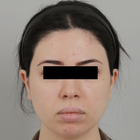
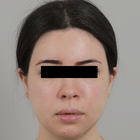
Front view


Front view
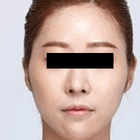

Front view


Front view
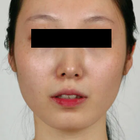
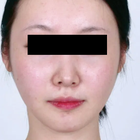
Front view
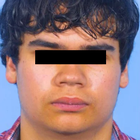
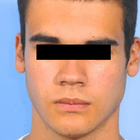
Front view

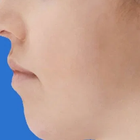
Full-side view
WHY US?
At Medijump, we're making medical easy. You can search, compare, discuss, and book your medical all in one place. We open the door to the best medical providers worldwide, saving you time and energy along the way, and it's all for FREE, no hidden fees, and no price markups guaranteed. So what are you waiting for?

Free

Best Price

Widest Selection

Risk-Free
What you need to know about Jaw Shaping in Mexico
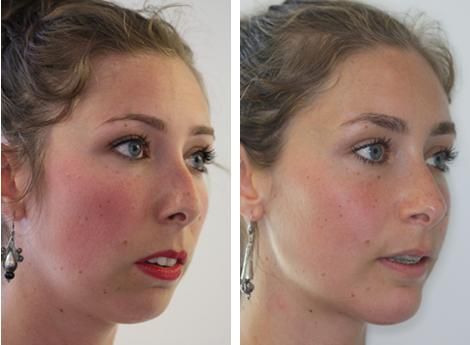
Also known as Mandibular Angle Reduction, V Line Surgery or Jawline Surgery, Jaw Shaping Surgery is performed with the purpose of narrowing the lower part of the face, with particular emphasis on the mandible (lower jaw) and the muscular attachments.
A wide jaw angle can be caused by enlarged muscle, bone, or a combination of the two. A prominent jaw angle or square jaw is considered a masculine trait, particularly in Asian countries. Therefore, many people opt for surgical correction to get their desired look. The surgery can shorten an overly long jaw and change a square-shaped face to an oval shape. Some people with temporomandibular joint (TMJ) disorders, uneven jaws, or jaws that causes pain when chewing might also undergo this surgery to correct pain.
There are several critical elements involved in the surgery, including the angles of the jaw, the body of the mandible, and the shape of the chin. While the procedure is typically performed on women with a square jawline who want a more feminine look, it can be done on both men and women. However, this procedure may not work for people who want to feminize a male’s face since males usually have a taller and longer face. Therefore, a V Line Surgery would only make a face look more elongated.
What does a Jaw Shaping Procedure Involve?
Various developmental, congenital, or some rare disorders such as acromegaly can cause enlarged mandibles, which can be corrected by Jawline Surgery. It is ideal for those with overly square or U-shaped jawline, overly manly jaw shape, bloated cheeks, and double chin. If you are considering V line surgery, you will need to be in a good state of physical and mental health.
Prior to the surgery, you will be examined by X-rays and 3D CT scans. Your surgeon will analyze and evaluate the overall structure of your jaw to create a plan to produce the desired result. You will also need to undergo medical tests such as ECGs to ensure that you don’t have a condition that may put you in danger or compromise the success of the surgery.
Surgery is performed under general anesthetic through tracheal intubation and leaves minimal scarring. You will need to fast for 8 hours before the surgery. Oscillating saws are used to reshape the jaw. The surgery can be performed inside the mouth (intraoral) or from outside the mouth (postauricular). The intraoral approach is the most widely used method. With this approach, an incision is made between the gum and the back of the cheek next to the jaw. Then, the jawline is carved out into their desired shape. A portion of the masseter muscle is shaved off, and the outer portion of the bone is chipped off. This approach is best for patients who aim to narrow their frontal view since the change is subtle and natural.
If the patient wants to change the appearance of the jaw angle from a side view, the overall contour of the bone will need to be changed. This means that the patient needs a full-thickness bone removal. Although it can be done through the intraoral approach, the surgeon’s view during this approach is very limited, which can decrease the precision of the procedure. Therefore, the best approach is from outside of the mouth or postauricular. To get direct access to the bone, the surgeon makes an incision hidden around the ear. This approach can remove a more substantial amount of bone. The recovery time using this approach is also much shorter than the intraoral approach since the swelling stays confined to the neck area.
How Long Should I Stay in Mexico for a Jaw Shaping Procedure?
The typical length of time for Jaw Shaping is usually around 2 hours. Nevertheless, you have to stay in the hospital for around one to two days for initial recovery where you will be monitored to make sure everything is fine. After being discharged, plan to stay in the Mexico for 10 to 14 days or until the surgeon says you can go home. The stitches are generally removed within two weeks after surgery, though this may vary from patient to patient.
What's the Recovery Time for Jaw Shaping Procedures in Mexico?
Immediately after the surgery, you will need to wear a facial mask that presses tightly against the skin around the jaw to keep the post-surgery swelling down. Also, you will not be allowed to eat foods that require chewing because it will delay the recovery and can cause bleeding. If you undergo the intraoral approach, your food intake will be limited for a considerable length of time. You may feel some swelling, numbness, and discomfort around the incision for several days, but the surgeon will prescribe medications to help with the pain.
The recovery period can be different for each individual; some people may be able to go back to their regular routines after seven to ten days, but others may need more time to fully recover. Avoid doing any vigorous activity that increases your blood pressure for several weeks, such as jogging and other exercises. Most of the visible signs, such as swelling and bruising, should disappear within a few weeks. Symptoms such as hematoma and infection are common, and will usually subside within three to six months post-surgery.
What sort of Aftercare is Required for Jaw Shaping Procedures in Mexico?
You must follow your surgeon aftercare instructions strictly to accelerate your recovery and minimalize possible complications. The instruction will likely include the following recommendations:
- Food intake. You may need to consume a liquid diet for a week after surgery as drinking your food is less painful and prevents trauma to the jaw area. You should be able to consume hard foods within one month.
- Oral hygiene. An antibacterial mouth rinse will keep your mouth and incision area clean, which will decrease the possibility of infection.
- Avoid tobacco and alcohol. Smoking and drinking alcohol should be avoided for a while.
- Keep the head elevated. You should keep your head elevated even when you are sleeping as it is the key to reduce swelling.
- Compression bandage. You are recommended to wear a compression bandage at all times for the first three days and while sleeping for the first week or two.
- Avoid strenuous activity. Do not do any heavy lifting or exercise for at least a month. However, do walk around and practice some gentle movement.
- Attend follow up appointments. The surgeon will check your progress to avoid any complications.
What's the Success Rate of Jaw Shaping Procedures in Mexico?
Jaw shaping surgery is a safe procedure when performed by a trained surgeon. Around 94% of patients express their satisfaction with this procedure. However, it is important to have realistic expectations. You should also be aware of the possible risks that this surgery may cause. These risks include infection, asymmetry, seroma, deep vein thrombosis, pulmonary embolism, and hematoma. Partial numbness of the jaw can also happen due to nerve damage.
Are there Alternatives to Jaw Shaping Procedures in Mexico?
If you wish to reshape your jaw but do not want to undergo surgery, there are non-invasive options available. The most popular alternatives are Botox and Dysport, which can effectively contour the jaw by relaxing the appearance of a square jaw. This procedure shrinks the masseter muscle by weakening it. These injectable can also be used to correct facial asymmetry around the jawline area. Since they are non-invasive, you can return to your daily activates right away and they offer a subtler shift in your appearance. However, these techniques are limited to cases in which the masseter is enlarged and may not work as well as V Line Surgery.
Whilst the information presented here has been accurately sourced and verified by a medical professional for its accuracy, it is still advised to consult with your doctor before pursuing a medical treatment at one of the listed medical providers
No Time?
Tell us what you're looking for and we'll reachout to the top clinics all at once
Enquire Now

Popular Procedures in Mexico
Prices Start From $70

Prices Start From $28

Prices Start From $1,945

Prices Start From $275

Recommended Medical Centers in Mexico for Jaw Shaping

- Interpreter services
- Translation service
- Religious facilities
- Medical records transfer
- Medical travel insurance
- Health insurance coordination
- TV in the room
- Safe in the room
- Phone in the room
- Private rooms for patients available

- Interpreter services
- Translation service
- Religious facilities
- Medical records transfer
- Medical travel insurance
- Health insurance coordination
- TV in the room
- Safe in the room
- Phone in the room
- Private rooms for patients available

- Interpreter services
- Translation service
- Religious facilities
- Medical records transfer
- Medical travel insurance
- Health insurance coordination
- TV in the room
- Safe in the room
- Phone in the room
- Private rooms for patients available

- Interpreter services
- Translation service
- Religious facilities
- Medical records transfer
- Medical travel insurance
- Health insurance coordination
- TV in the room
- Safe in the room
- Phone in the room
- Private rooms for patients available

- Interpreter services
- Translation service
- Religious facilities
- Medical records transfer
- Medical travel insurance
- Health insurance coordination
- TV in the room
- Safe in the room
- Phone in the room
- Private rooms for patients available

- Interpreter services
- Translation service
- Religious facilities
- Medical records transfer
- Medical travel insurance
- Health insurance coordination
- TV in the room
- Safe in the room
- Phone in the room
- Private rooms for patients available

- Interpreter services
- Translation service
- Religious facilities
- Medical records transfer
- Medical travel insurance
- Health insurance coordination
- TV in the room
- Safe in the room
- Phone in the room
- Private rooms for patients available

- Interpreter services
- Translation service
- Religious facilities
- Medical records transfer
- Medical travel insurance
- Health insurance coordination
- TV in the room
- Safe in the room
- Phone in the room
- Private rooms for patients available

- Interpreter services
- Translation service
- Religious facilities
- Medical records transfer
- Medical travel insurance
- Health insurance coordination
- TV in the room
- Safe in the room
- Phone in the room
- Private rooms for patients available

- Interpreter services
- Translation service
- Religious facilities
- Medical records transfer
- Medical travel insurance
- Health insurance coordination
- TV in the room
- Safe in the room
- Phone in the room
- Private rooms for patients available
Jaw Shaping in and around Mexico
About Mexico
The Country of Mexico forms a part of the North American continent and lies directly south of the United States and is the fifth largest country in the Americas. It comprises 31 states and a Federal District. The capital of Mexico City lies in the Federal District. Mexico is dominated by several mountain ranges and the more well-known ones are the Sierra Madre Oriental and the Sierra Madre Occidental. It is famous for its amazing beaches, and the best-known Latin American pyramids include the Pyramid of the Sun and the Pyramid of the Moon at Teotihuacán in central Mexico,
Mexico ranks among the top five locales for medical tourism worldwide, consistently attracting those seeking not only medical care but luxurious, boutique-styled facilities for recovery as well. The distinct appeal to choosing Mexico as a destination for medical procedures is not solely based on the accommodation standards, but also the notably lower costs contrasted with those in the United States. With a price tag that usually amounts to 70-80% less than what you'd expect to pay in the US for the same procedure, it's no wonder why Mexico is such an attractive option for medical tourists.
In terms of the economic value, medical tourism in Mexico has proven to be no small industry. According to the data gathered in 2016, the industry is worth a whopping $4.8 Billion. Moreover, it is not an underused resource, as can be seen in the influx of medical tourists that the country welcomes each year. An astonishing 1 million individuals travel to Mexico annually, seeking different varieties of treatments and procedures.
Geographically, it's noted that the majority of these medical tourists hail from nearby US states. In fact, states that border Mexico, such as California, Texas, and Arizona, make up approximately 70% of the medical tourists that arrive in Mexico.
Tijuana, Cancun, Mexicali, and Monterrey are some of the more popular cities in Mexico for medical tourism and the flowing procedures:
- Dental treatments including dental surgery
- Plastic and Cosmetic Surgery
- Bariatric Surgery
- Other medical procedures like dermatology, orthopedics, gynecology, and ophthalmology.
Popular Parts of Mexico
Six Cities in Mexico that should be on your itinerary:
- Mexico City – This enormous capital city is the most populous city on the North American continent. The metropolitan area of the city is home to a staggering 21.2 million people. El Zocalo, the main public square is a famous landmark in Mexico City. It is also a UNESCO World Heritage site.
- Cancun –Is a major resort city with turquoise blue waters and striking white sandy beaches. It has a population of about 628,000 people. You can take day trips to the Mayan ruins, the unspoiled jungle habitats of Coba, and Chichen Itza from Cancun.
- San Miguel de Allende –Is one of the most popular cities in Mexico. The must-visit sites in this city are the San Miguel Arcangel Parish, the archaeological zone of Canada la Virgen, and the handicraft market.
- Guadalajara – It’s the second largest city in Mexico and has a population of 5.1 million. The city has a more relaxed feel and a distinctly Mexican flavor. The historic center is impressive with a cathedral and colonial architecture. Guadalajara Cathedral, Instituto Cultural de Cabanas, and the Expiatory Temple are famous sights to visit.
- Oaxaca – Is a southern Mexican city and is situated in a valley. It is home to 4.2 million inhabitants. Oaxaca Cathedral, Zocalo and Mercado Benito Juarez, and The Rufino Tamayo Museum are a few of the interesting places to see in this city.
- Tijuana – Is a border city in Mexico and shares its border with California. Because of its location, this city is very popular with American medical tourists. The Avenida Revolucion is the main street and is lined with Bars and Restaurants. Popular landmarks include Jai Alai Fronton Palace, Centro Cultural Tijuana, and Estadio Caliente. It has a population of 1.3 million people.
Other important cities are Merida, Acapulco, Puebla City, Taxco Puerto Vallarto, and Playa del Carmen.
Weather and Climate in Mexico
Mexico, in its vastness, doesn't possess a uniform climate throughout the nation. Various regions exhibit distinct weather patterns, which are inextricably linked to their geographical features. Given Mexico's immense size, it's unsurprising that the climate varies significantly across different locations. The periodic patterns across the nation are not homogenous, as one would expect in a smaller, less diverse country. Instead, Mexico’s topography, which is incredibly varied, heavily influences the country’s diverse weather and climate.
In terms of seasonality, Mexico traditionally experiences two major seasons - the rainy season and the dry season. Each of these seasons presents its own unique set of conditions and weather patterns, shaping the climate across the country in distinctive ways. The shifts between these periods of rain and periods of drought are quite pronounced, showcasing the climatic dualism that shapes the Mexican landscape. This cyclical pattern of rainy and dry seasons is a key part of Mexico's climatic identity, having profound effects on both its environment and the livelihood of its inhabitants.
- Rainy Season – Most of Mexico experiences rain from May to September or October. The weather is hot and humid in these months, especially in Southern Mexico. The average temperature in the summer months is around 83 degrees Fahrenheit. In winter, the temperature averages between 68- and 74 degrees Fahrenheit.
- Dry Season – October to May there is hardly any rain and it happens to be the most popular time to visit Mexico. During the winter months of December to February, the non-coastal regions have cold weather. At times, it reaches freezing temperatures. June to November is the hurricane season and hence it is better to avoid traveling during this time.
Getting Around in Mexico
The easiest way to reach Mexico is through Mexico City International Airport, which is also referred to as Benito Juarez International Airport, which is the busiest airport in Mexico. The airport links 52 domestic cities and 50 international destinations in Latin America, North America, Europe, and Asia. Aeromexico is the largest carrier serving many Latin American cities, domestic and international cities. Other prominent Mexican airlines are Interjet, Volaris, and Aeromar. Major American carriers like United Airlines, American Airlines, and Delta Air also operate flights to Mexico City.
For travel within Mexico, air travel is the best mode considering the vast size of the country. Budget airlines like Avolar, Azteca, Interjet, vivaAerobus, and Volaris offer competitive and cheap airfares for domestic travel.
You can navigate between cities via local buses and rental cars, making the journey a part of your Mexican adventure. However, for a quicker commute, the metro system prevails as the fastest mode of transport. This web of fast trains bridges the gap between major cities including Mexico City, Guadalajara and Monterrey, ensuring convenient and expedient transportation.
Navigating through Mexico City is fairly simple and cost-effective, courtesy of its inexpensive public transport system. You can choose from a variety of transport modes, including the Metro, first and second-class buses, colectivos, and Nissan Tsuru libre taxis.
However, if you prefer sitio taxis, it is advised not to hail one from the street after dark for safety reasons. Furthermore, for those not fluent in Spanish or unfamiliar with the city's layout, it is highly recommended to use taxis from Taxi Ranks, ensuring a smoother and more secure journey.
Tourist Visas in Mexico
Traveling to Mexico as a tourist, you need to apply for and get a tourist visa well in advance. Your passport must be valid to cover at least three months beyond the duration of your visa. A Mexican tourist visa is for a single entry and is valid for only six months. You should travel within 90 days of the visa being issued.
Mexico has a waiver for the tourist visa requirement for the citizens of 67 countries including the USA, European Union, Latin America, and Australia. Under this privilege, you can visit Mexico for a period of 30 to 180 days without a tourist visa. However, you need to get an online Electronic Authorization before traveling to Mexico.
Nationals of Russia, India China and a few other countries need to get a visa in advance before entering Mexico.
Additional Information
- The currency of Mexico is Peso and has a $ symbol like the US Dollar. So, MXN is an alternative symbol to avoid confusion. Shopkeepers accept US dollars but refuse Euros. The conversion rate of a US dollar to Mexican Peso is 17.97 as of Mexico 2023.
- You can use debit and credit cards within city limits in Mexico, but many retailers levy a surcharge for credit cards. Small shopkeepers insist on cash. ATMs are present everywhere and have bilingual options with English as a choice.
- Spanish is the first and the main language spoken in Mexico. People also speak English in tourist areas and along the Northern border. However, it is always better to learn a little Spanish when you travel to Mexico.
- Mexico does not have a national religion, but Roman Catholicism is a major faith.
- Constitution Day (Feb 4), Benito Juarez’s Birthday (Mar 18), Independence Day (Sep 16), Revolution Day (Nov 18), and Christmas (Dec 25) are some of the statutory public holidays in Mexico.
Popular Searches
- Plastic Surgery in Thailand
- Dental Implants in Thailand
- Hair Transplant in Thailand
- Breast Augmentation Thailand
- Gastric Sleeve in Thailand
- Gender Reassignment Surgery in Thailand
- Laser Hair Removal in Bangkok
- Botox in Bangkok
- Dermatology in Bangkok
- Breast Augmentation in Bangkok
- Coolsculpting in Bangkok
- Veneers in Turkey
- Hair Transplant in Turkey
- Rhinoplasty in Turkey
- Stem Cell Therapy in Mexico
- Rhinoplasty in Mexico
- Liposuction in Mexico
- Coolsculpting in Tijuana
- Rhinoplasty in Korea
- Scar Removal in Korea
- Gastric Sleeve in Turkey
- Bone Marrow Transplant in India
- Invisalign in Malaysia
- Plastic Surgery in the Dominican Republic
- Tummy Tuck in the Dominican Republic
- Plastic and Cosmetic Surgery in Poland
- Rhinoplasty in Poland
- Hair Implant in Poland
- Dental Implants in Poland
- IVF in Turkey

